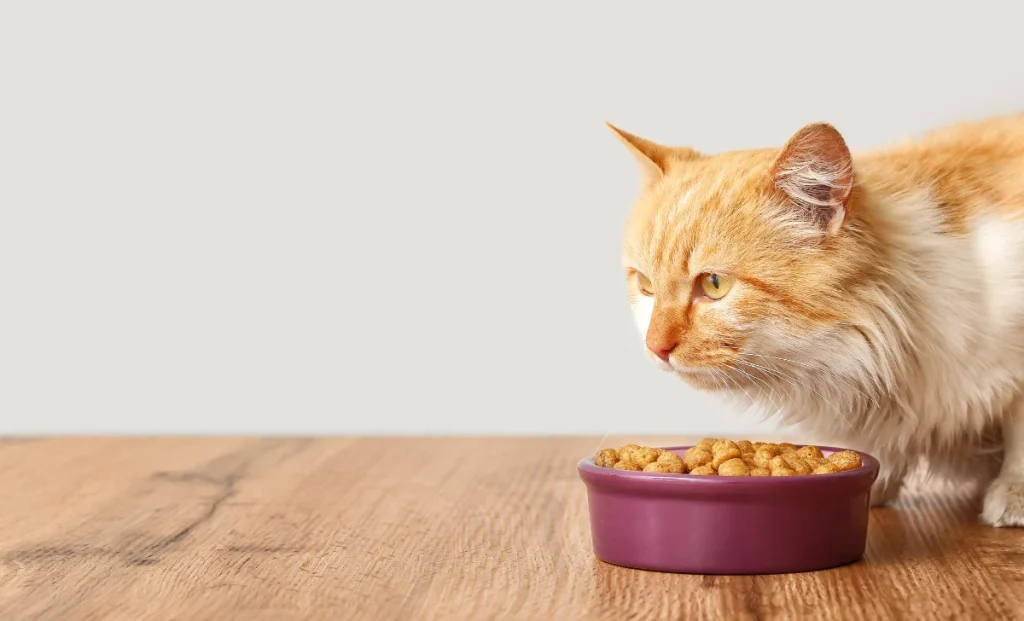How to Introduce Dry Food to Your Cat the Right Way

Getting your cat to switch to dry food isn’t always as simple as swapping out their bowl. You’ve probably seen other cat parents try to make this change overnight, only to end up with a hungry, stubborn kitty who flat-out refuses to eat. The truth is, cats need time to adjust to new textures and flavors.
Here’s what works best for this process: patience is everything. Your cat’s digestive system has gotten used to their current food, and suddenly switching can cause upset stomachs or complete food strikes.
The same gentle approach works whether you’re dealing with a kitten learning about solid food or an adult cat who’s been spoiled on wet food.
When to Start Introducing Dry Food
Timing this transition right can make or break your success. With kittens, you want to wait until they’re about 6-8 weeks old and their little teeth can actually crunch through kibble. Even then, start by making it mushy with warm water – those tiny mouths aren’t ready for hard kibble right away.
For adult cats, you need to pick your moment carefully. Don’t even think about changing their diet when they’re sick, stressed, or dealing with big changes like a move.
Your cat needs to be in a good headspace and healthy before you mess with their food routine. If your cat has dental issues or health problems, definitely check with your vet first.
How to Switch from Wet to Dry Cat Food
Here’s where many pet owners make the mistake of rushing the process. You’ll want to follow a solid 7-10 day plan that your cat’s stomach can actually handle. Start with mostly what they know – about 75% of their regular wet food mixed with just 25% dry food. Blend the foods thoroughly so your cat can’t pick out only the wet pieces.
After a couple days, go fifty-fifty with both foods. Then flip it around days 5-6 so you’re doing 75% dry and 25% wet. By the end of the week or so, you should be serving straight dry food. But if your cat starts turning their nose up or gets an upset stomach, you need to pump the brakes and stay at whatever ratio was working.
Watch your cat’s water bowl like a hawk during this whole process. Dry food has way less moisture than wet food, so your cat needs to drink more water to stay healthy. You’ll want to put out extra water bowls around the house or even get one of those water fountains that cats love.
Choosing the Right Dry Food
Shopping for cat food can feel confusing with all the bright labels and marketing. Ignore the flashy front and turn the package around to check what’s actually inside. You want to see real meat – chicken, salmon, turkey – as the very first thing listed. If you see a bunch of corn, wheat, or mystery “by-products” at the top, keep looking.
Think about what your specific cat needs too. Does your cat have tummy troubles? Choose foods with simple, shorter ingredient lists. ave an overweight cat? Special recipes exist to support healthy weight loss.
Don’t overlook the size and shape of the kibble itself – smaller cats and older kitties usually prefer smaller pieces they can crunch easily.
Tips for Making Dry Food More Appealing
Sometimes you need to get creative to win over a stubborn cat. Adding a bit of warm water or low-sodium chicken broth can work wonders – it softens the kibble and makes it smell more like the wet food they’re used to. Start with enough liquid to make it soupy, then gradually use less until you’re serving it dry.
Adding broken treats on top helps your cat connect good feelings with the new food. You can also crush some of the dry food into powder and mix it with wet food during the early days.
Try warming the food slightly in the microwave for just a few seconds to bring out the smell, but always test it with your finger first. Keep meal times consistent and pick a quiet spot where your cat is comfortable.
In Closing
Making the switch to dry food doesn’t have to turn into a battle with your cat. Stick to the gradual mixing schedule, keep a close eye on how your cat responds, and don’t be afraid to slow things down if they’re not having it. Pick a good quality food that matches your cat’s age and any special needs they might have.
If your cat stops eating entirely for a whole day or starts acting sick during the transition, get on the phone with your vet right away.
Most cats do just fine with this change when you take your time and pay attention to what they’re telling you. Some cats take longer to come around than others, but consistency and patience always win in the end.

